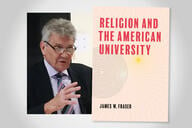You have /5 articles left.
Sign up for a free account or log in.
LinkedIn has officially joined the jam-packed college rankings party. And with 313 million users, the job networking site has a big data sample both for creating the rankings and for marketing them.
The new ranking system tracks the success of college graduates in eight broad career paths, adding weight for jobs deemed “desirable.” It lists the top 25 institutions in each career category.
Last July LinkedIn released a “field of study explorer” that allowed people to link college majors with jobs. The rankings are aimed more overtly at prospective college students, both high school students and returning adults.
To create them, the company tracked employment patterns of its users to figure out what the most in-demand careers are, as well which graduates get jobs in those fields. The categories of jobs it used are accounting professionals, designers, finance professionals, investment bankers, marketers, media professionals, software developers, and software developers at startups.
“We define a desirable job to be a job at a desirable company for the relevant profession,” LinkedIn said in a written statement.
Defining a desirable employer comes first. The rankings assign points for both attracting and retaining talent. For example, an investment bank looks better if it lures LinkedIn users away from another bank.
Only “relevant” graduates are considered in the rankings, the company said. So colleges are rated based solely on graduates who work within the eight tracked career fields. And the rankings seek to reflect recent employment trends by looking only at users who earned their undergraduate degrees within the previous eight years.
When a user clicks on a ranked college, LinkedIn reveals more details, such as where alumni work and live. And it features individual alumni profiles.
The top 25 lists include filters for the United States, Canada and the United Kingdom.
Two experts on measuring career outcomes said LinkedIn’s rankings are a welcome addition.
“I am no fan of rankings, let alone ranking institutions, but as a way of differentiating programs based on outcomes, I find this terribly interesting,” Tod Massa, director of policy research and data warehousing at State Council of Higher Education for Virginia, said in an email. “In many ways, this might be a more valuable approach than just wages, in that it does appear to represent what individuals feel about their jobs and education.”
Mark Schneider agreed that the rankings are intriguing. Schneider, a vice president at the American Institutes for Research and a visiting scholar at the American Enterprise Institute, said LinkedIn could show a big audience the various pathways to career success.
“It’s going to have a lot of eyeballs,” he said.
‘Big Data’
Both Massa and Schneider noted that LinkedIn is ranking only a tiny swath of the academy. Listing 25 institutions in each category is remaining in rarefied air, they said.
“It does seem to miss a few thousand colleges and universities,” said Massa. He said he would rather see LinkedIn move away from rankings to listings of the best academic programs and career outcomes for all colleges.
The company said in the future it would consider creating college rankings for a broader spectrum of career paths.
Given the relatively small lists of colleges, the usual suspects tend to dominate.
For example, all eight Ivy League institutions landed in the top 12 spots for investment bankers (but Georgetown University beat out the University of Pennsylvania and Yale University for first place). Likewise, Carnegie Mellon University and the California Institute of Technology were the top two institutions for software developers.
There are some surprises in the rankings, however, with lesser-known institutions placing well.
For example, Fairfield University and Bentley University were among the top 25 in accounting. And while it’s certainly a big name, the University of Phoenix might be a surprising choice for ranking 11th in marketing.
Each ranking list includes a link to another tool LinkedIn released on Wednesday.
The University Finder is a search engine for colleges based on a student’s interest in a possible career. Users type in what they’d like to study, which employer they might want to work for and where they might want to live. The site then spits out “popular schools for this career goal.”
A hypothetical student might say she wants to study game and interactive design, with a preference for living in greater Chicago. The top three institutions for that path are DePaul University, Columbia College Chicago and the Illinois Institute of Art, according to LinkedIn.
That search can be refined further. For example, if the student wants to work for WMS Gaming and High Voltage Software, two more institutions -- Full Sail University and Sacred Heart University -- pop up on the top of the list. And all those listings are based on actual users who work for specific employers.
LinkedIn also released a social networking application for prospective students to chat with each other about colleges, and to talk with current students.
Huge samples and granular details make the new rankings interesting, Schneider said, whether or not they really take off as a consumer guide to college.
“They’re getting smart about how to tap into this big database,” he said of LinkedIn. “This is big data.”




